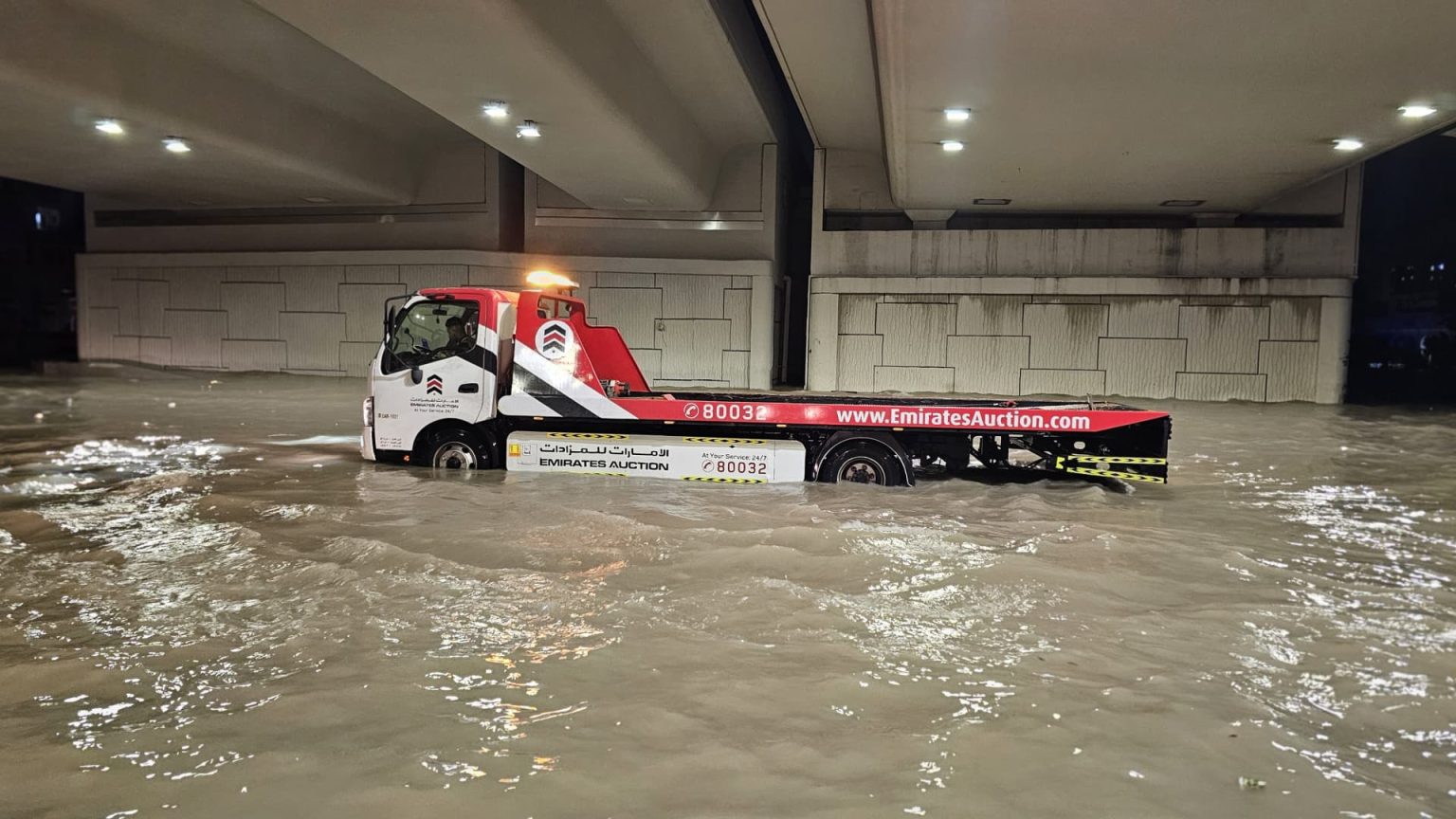Heavy rain and storms have caused flooding in Gulf states, including the United Arab Emirates, leading to the closure of Dubai’s airport. The UAE, typically known for hot and sunny weather, experienced over 100 mm of rain in a 24-hour period, marking a 75-year record for the country. The local government issued a red warning and closed offices, schools, and banks to ensure the safety of residents. These storms also affected other parts of the Middle East, with at least 19 people reported dead in Oman due to flooding.
The heavy rain and flooding in the Gulf states have disrupted daily life, with vehicles struggling to move on flooded streets and pedestrians wading through submerged areas. The adverse weather conditions have left many residents stranded and struggling to navigate the waterlogged streets. Images from the affected areas show cars attempting to navigate flooded roads and submerged machinery after the heavy rainfall. The impact of the storms has been significant, causing challenges for residents and visitors in the affected areas.
The closure of Dubai’s airport highlights the severity of the weather conditions in the region, with the airport being one of the busiest in the world. The decision to shut down the airport was a precautionary measure to ensure the safety of passengers and staff during the storms and flooding. The UAE government’s response to the extreme weather, including issuing a red warning and closing offices and schools, demonstrates a proactive approach to managing the impact of the storms and protecting the public from harm.
The storms and heavy rain have prompted authorities in the Gulf states to take swift action to address the flooding and its effects on the local population. With reports of 19 deaths in Oman as a result of the flooding, the priority is on ensuring the safety of residents and providing support to those affected by the extreme weather conditions. The images of flooded streets and stranded vehicles underscore the challenges faced by communities in the aftermath of the storms, highlighting the need for ongoing support and assistance in the affected areas.
The extreme weather conditions in the Gulf states serve as a reminder of the unpredictable nature of climate patterns and the importance of being prepared for emergencies. The record-breaking rainfall in the UAE, coupled with the widespread flooding in Oman and other parts of the Middle East, underscores the need for effective disaster response strategies and infrastructure to mitigate the impact of natural disasters. The images of flooded streets and submerged vehicles in Dubai and other affected areas serve as a stark reminder of the power of nature and the vulnerability of human settlements to extreme weather events.
In conclusion, the storms and heavy rain in the Gulf states have had a significant impact on the region, leading to flooding, closures, and disruptions to daily life. The response from local authorities, including issuing warnings, closing public facilities, and providing support to affected communities, has been critical in managing the aftermath of the extreme weather conditions. The images of flooded streets, stranded vehicles, and submerged machinery serve as a visual representation of the challenges faced by residents and highlight the importance of preparedness and resilience in the face of natural disasters.


